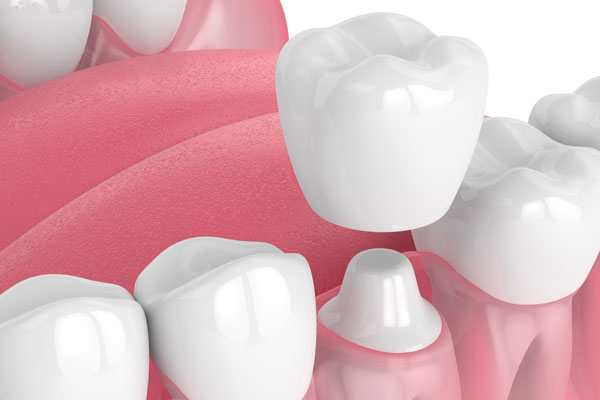How Is Periodontal Disease Diagnosed?

Periodontal disease is a severe gum infection that, if untreated, may destroy the soft tissues and bones supporting the teeth. It could cause the teeth to loosen, and is currently the leading cause of tooth loss in adults.
Although periodontal disease is common, it can easily be prevented with good oral hygiene, which includes brushing and flossing regularly, as well as regular visits to the dentist for checkup and cleanings. The checkups give the dentist a chance to diagnose gum disease before it worsens and reduces the risk of getting the disease.
Symptoms of periodontal disease
Healthy gums should appear pale pink and stay firmly fitted around the teeth. Patients who have a form of gum disease may experience symptoms such as:
- Tender Gums
- Bleeding gums
- Swollen or inflamed gums
- Purplish, bright red, or dull red gums
- Receding Gums
- Bad breath
- Pus pockets around the teeth
- Loose teeth
- Changes in bite fit and alignment
- Painful chewing and biting
- Spaces between the teeth
Types of periodontal disease
This disease takes different forms. Dentists often deal with the following types of periodontal disease:
Chronic periodontitis
This is the most common type of gum diseases and mostly affects adults, although children are not exempted. This type is caused by the accumulation of plaque and causes gradual deterioration that may get better or worse with time. If left untreated, it will cause damages to the gums and bones and cause tooth loss.
Aggressive periodontitis
This form often starts during childhood or early adulthood and affects only a small percentage. This type is often hereditary and may cause rapid degeneration of the bone and tooth loss if untreated.
Necrotizing gum disease
The signs usually include the death (necrosis) of gum tissues, tooth ligaments, and supporting bone due to a shortage of blood supply to the area, and causing severe infection. This type is usually diagnosed in people suffering from malnutrition and compromised immune systems, often from HIV infection or cancer treatment.
Getting a diagnosis
To diagnose and determine the type and severity of gum disease, the dentist will perform the following:
- Review of the patient’s medical history to know the factors that may be aggravating the symptoms, including smoking and medications that cause dry mouth.
- Examine the mouth for plaque and calculus accumulation and check for bleeding
- Check the pocket depth of the gums using a dental probe, place beside the tooth under the gum line at different points in the oral cavity. The pocket should be between one and three millimeters in a healthy mouth. Pockets beyond four millimeters may mean gum disease. It is harder to clean pockets deeper than six millimeters.
- The dentist may also perform x-ray scans to determine if there is bone loss in the deep gum pockets.
Final note
Patients need to abide by their dentist’s rules for routine checkups. Once they notice any of the signs of periodontal disease, they must immediately book an appointment with the dentist. The earlier the treatment commences, the better the chances of resolving the damages caused by gum disease.
Request an appointment here: https://thechesterfielddentist.com or call Chesterfield Dentist at (804) 412-0867 for an appointment in our Chester office.
Check out what others are saying about our services on Yelp: Read our Yelp reviews.
Recent Posts
Dental restorations can improve overall health by decreasing the chances of infection, decay, and issues caused by broken or misaligned teeth. These treatments range from removing teeth, replacing tooth structures that have decayed, and correcting the patient’s overall bite to improving eating and drinking.A restoration may be performed for cosmetic or health-related reasons, but even…
Crowns are commonly used in dental restorations. A crown is a cap shaped like a tooth but hollow in the middle. It fits over a natural tooth that has to be prepared first. Depending on the issue it is correcting, a crown can be used by itself or as a component of another restoration technique.Teeth…
A broken tooth can affect both oral health and confidence. Whether caused by biting into something hard, an accident, or underlying decay, prompt dental care is essential to prevent further damage and restore normal function. Fortunately, modern dentistry provides several reliable treatments that repair structural damage and rebuild a natural-looking smile. A cosmetic, family, or…
There may be dental restorations available to treat a tooth that is damaged. The prognosis for restoring a damaged tooth is best when treatment takes place as soon as possible after the tooth breaks or cracks. This can occur from biting down on something that is too hard but can also happen if you get…


